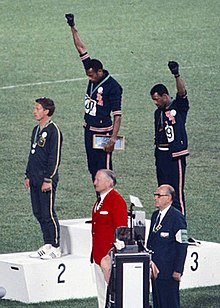I’ve sung the praises of the Jazz apple, still a great favorite of mine. But recently I’ve been hard-pressed (hard-pressed, get it?) to find any in my local stores, and so I’ve been forced to try other varieties.
Most of my experiments have been failures. I prefer very hard apples, and most aren’t hard enough. And I prefer apples with a complexity of sweet/sour flavor. The Jazz has both of these characteristics, and what’s more the Jazz batches don’t differ too much in quality from each other.
But I’m happy to say I’ve found a new contender: the Tango (is it an accident or not that both have names that are musical and dance references?). The Tango is very crisp, and the taste is very aromatic, almost like roses (or like I’d imagine roses would taste). Love it.
The Tango was first marketed in 2009 and has been widely available only since 2013, although my first encounter with it was just the other day. It’s a cross between a Honeycrisp and a Zestar (interestingly enough, I just had my first Zestar about two weeks ago, and although it had a good taste it was too soft for me):
The name SweeTango is a brand name of the ‘Minneiska’ apple, and is a registered trademark owned by the University of Minnesota. Like the ‘Honeycrisp’, the ‘Minneiska’ has much larger cells than most apples, which shatter when bitten to fill the mouth with juice.
Indeed. About that taste:
The ‘Minneiska’ has a texture similar to ‘Honeycrisp’ with a slightly tart and citric quality. The name “SweeTango” is a portmanteau of the words sweet and tangy.
There’s that complexity of taste I look for.
Here’s an article from the 2011 New Yorker:
Like Honeycrisp, SweeTango has much larger cells than other apples, and when you bite into it the cells shatter, rather than cleaving along the cell walls, as is the case with most popular apples. The bursting of the cells fills your mouth with juice. Chunks of SweeTango snap off in your mouth with a loud cracking sound. Although a crisp texture is the single most prized quality in an apple””even more desirable than taste, according to one study””crispness is more a matter of acoustics than of mouthfeel. Vibrations pass along the lower jaw and set the cochlea trembling. Biting into a really crisp apple, one feels, in the words of Edward Bunyard, the author of “The Anatomy of Dessert,” “a certain joy in crashing through living tissue, a memory of Neanderthal days.”…
By the time of the Civil War, there were many kinds of apples growing across the United States, but most of them didn’t taste very good, and as a rule people didn’t eat them. Cider was cheaper to make than beer, and many settlers believed fermented drinks were safer than water. Everyone drank hard cider. President John Adams drank a tankard before breakfast. Babies drank it before going to bed. At the end of the nineteenth century, when Carry Nation took up her axe in the service of the temperance movement, she likely employed it on apple trees as well as saloons. By the beginning of the twentieth century, the apple had a serious public-relations problem.
The solution, as Michael Pollan relates in his book “The Botany of Desire,” was to promote the eating of apples as a healthy snack. J. T. Stinson, a fruit specialist, first used the phrase “An apple a day keeps the doctor away” at the St. Louis World’s Fair, in 1904. (He adapted the slogan from the traditional English proverb “An apple before going to bed keeps the doctor from earning his bread.”) Many cider-makers had long prized the chance seedlings, discovered in their fields and orchards, that yielded unexpectedly delectable eating apples.
I happen to like pursuing these so-called heirloom apples. But Tango isn’t an heirloom; it’s relatively new.
That New Yorker article goes into the story of how supermarket apples had devolved (by the time of my youth) into the mediocre Big Three (or two, depending on how you count): Macintosh, and red and yellow Delicious. Although yellows could sometimes be very good if crisp, I stopped eating apples a long time ago because I found the taste and texture of the supermarket apples of the time to be bad. But now we have an embarrassment of apple riches, not just at farmstands but in the supermarkets, and not just at fancy markets such as Whole Foods but at our local neighborhood chains.
According to the article, it was the Granny Smith that turned the tide. My trademark.
[ADDENDUM: And here’s a job I think I’d like:
In the fall, during the apple harvest, Bedford tastes apples from blossom times past, up to five hundred apples a day, in the hope of finding that one apple in ten thousand that will be released as a commercial variety. I spent an afternoon with him in early September, walking through long rows of young trees, and tasting apples of every imaginable size, shape, hue, and flavor, from musky melonlike apples to bright lemony apples and apples that tasted like licorice. “We don’t actually swallow, and we don’t really even have time to spit,” Bedford explained. “You just kind of hold a bit in your mouth for a while, until you get the flavor, and then let it fall out.”
If a tree produces exceptionally good apples for several years in a row, it achieves élite status and is awarded a number. Four clones are made from the mother tree’s wood, and those trees are grown in another orchard on the property, under commercial conditions. To evaluate the élite trees, Bedford carries a field notebook with twenty categories on a page, which, in addition to the “organoleptics”””all the sensory stuff, like flavor, texture, and color””include tree size, shape, and yield. He scores each category from one to nine. He generally continues these yearly evaluations for a decade or longer, in order to subject the trees to a representative range of extreme summers and winters and drought and flood, and in the hope of ferreting out all the quirks that apple trees are heir to. Some are wild in their youth but eventually settle down, while others bear fruit every other year; some bear smaller fruits as the trees age, while others drop their apples before they’re ripe.
Finally, a truly outstanding apple is named, the tree is patented, and clones are released to nurseries, where thousands of copies of the trees are made and sold to growers, for which the university collects a royalty of around a dollar per tree during the life of the patent. Large color posters of the five apples released during Bedford’s time at the agricultural station decorate his office, their swollen flesh glistening with beads of moisture, like centerfold pinups in a mechanic’s shop.
Much, much more good stuff at the link.]



